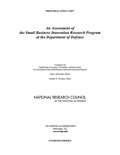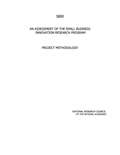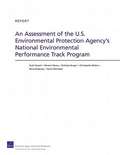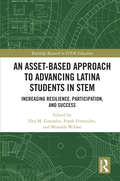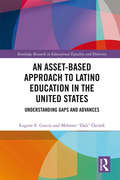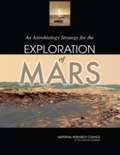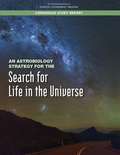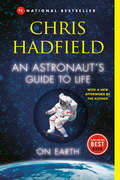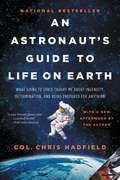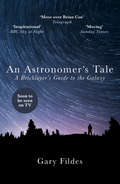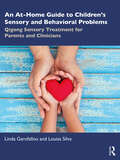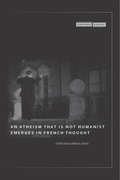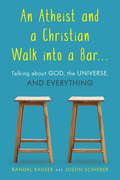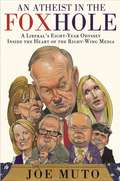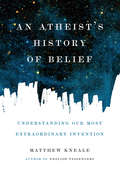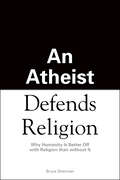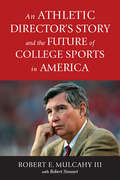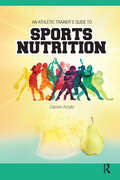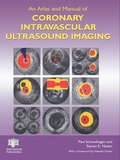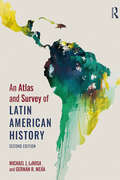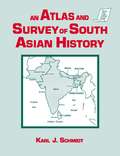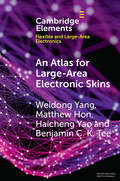- Table View
- List View
An Assessment of the SBIR Program at the Department of Defense
by National Research Council of the National AcademiesThe SBIR program allocates 2.5 percent of 11 federal agencies' extramural R&D budgets to fund R&D projects by small businesses, providing approximately $2 billion annually in competitive awards. At the request of Congress, the National Academies conducted a comprehensive study of how the SBIR program has stimulated technological innovation and used small businesses to meet federal research and development needs. Drawing substantially on new data collection, this book examines the SBIR program at the Department of Defense and makes recommendations for improvements. Separate reports will assess the SBIR program at NSF, NIH, DOE, and NASA, respectively, along with a comprehensive report on the entire program.
An Assessment of the Science Proposed for the Deep Underground Science and Engineering Laboratory(DUSEL)
by Ad Hoc Committee to Assess the Science Proposed for a Deep Underground Science Engineering LaboratoryAccording to the big bang theory, our Universe began in a state of unimaginably high energy and density, contained in a space of subatomic dimensions. At that time, unlike today, the fundamental forces of nature were presumably unified and the particles present were interacting at energies not attainable by present-day accelerators. Underground laboratories provide the conditions to investigate processes involving rare phenomena in matter and to detect the weak effects of highly elusive particles by replicating similar environments to those once harnessed during the earliest states of the Earth. These laboratories now appear to be the gateway to understanding the physics of the grand unification of the forces of nature. Built to shield extremely sensitive detectors from the noise of their surroundings and the signals associated with cosmic rays, underground facilities have been established during the last 30 years at a number of sites worldwide. To date, the United States' efforts to develop such facilities have been modest and consist primarily of small underground laboratories. However, the U. S. underground community has pushed for larger underground facilities on the scale of major laboratories in other countries. An Assessment of the Deep Underground Science and Engineering Laboratory (DUSEL) addresses this matter by evaluating the major physics questions and experiments that could be explored with the proposed DUSEL. Measuring the potential impact, this assessment also examines the broader effects of the DUSEL in regards to education and public outreach, and evaluates the need associated with developing U. S. programs similar to science programs in other regions of the world.
An Assessment of the Small Business Innovation Research Program: Project Methodology
by Technology Committee on Capitalizing on Science Innovation: An Assessment of the Small Business Innovation Research ProgramIn response to a Congressional mandate, the National Research Council conducted a review of the SBIR program at the five federal agencies with SBIR programs with budgets in excess of $100 million (DOD, NIH, NASA, DOE, and NSF). The project was designed to answer questions of program operation and effectiveness, including the quality of the research projects being conducted under the SBIR program, the commercialization of the research, and the program's contribution to accomplishing agency missions. This report describes the proposed methodology for the project, identifying how the following tasks will be carried out: 1) collecting and analyzing agency databases and studies; 2) surveying firms and agencies; 3) conducting case studies organized around a common template; and 4) reviewing and analyzing survey and case study results and program accomplishments. Given the heterogeneity of goals and procedures across the five agencies involved, a broad spectrum of evaluative approaches is recommended.
An Assessment of the U.S. Environmental Protection Agency's National Environmental Performance Track Program
by Rena Rudavsky Noreen Clancy Nicholas Burger Christopher Nelson Scott HassellThis report addresses the conceptual basis, design, and implementation of the National Environmental Performance Track program. The voluntary program sought to encourage facilities to improve their environmental performance and provide a more collaborative relationship between facilities and regulators. While the program had mixed success, EPA should continue to seek out new approaches to complement and enhance traditional regulatory approaches.
An Asset-Based Approach to Advancing Latina Students in STEM: Increasing Resilience, Participation, and Success (Routledge Research in STEM Education)
by Frank Fernandez Elsa M. Gonzalez Miranda WilsonThis timely volume challenges the ongoing underrepresentation of Latina women in science, technology, engineering and mathematics (STEM), and highlights resilience as a critical communal response to increasing their representation in degree programs and academic posts. An Asset-Based Approach to Advancing Latina Students in STEM documents the racialized and gendered experiences of Latinas studying and researching in STEM in US colleges, and centers resilience as a critical mechanism in combating deficit narratives. Adopting an asset-based approach, chapters illustrate how Latinas draw on their cultural background as a source of individual and communal strength, and indicate how this cultural wealth must be nurtured and used to inform leadership and policy to motivate, encourage, and support Latinas on the pathway to graduate degrees and successful STEM careers. By highlighting strategies to increase personal resilience and institutional retention of Latina women, the text offers key insights to bolstering diversity in STEM. This text will primarily appeal to academics, scholars, educators, and researchers in the fields of STEM education. It will also benefit those working in broader areas of higher education and multicultural education, as well as those interested in the advancement of minorities inside and outside of academia. Elsa M. Gonzalez is Assistant Professor of Higher Education at the University of Houston, USA. Frank Fernandez is Assistant Professor of Higher Education at the University of Mississippi, USA. Miranda Wilson earned a Ph.D. in Higher Education Leadership and Policy Studies at the University of Houston, USA.
An Asset-Based Approach to Latino Education in the United States: Understanding Gaps and Advances (Routledge Research in Educational Equality and Diversity)
by Eugene E. Garcia Mehmet OzturkChallenging perspectives that often characterize Latinos as ‘at-risk,’ this book takes an ‘asset’ approach, highlighting the favorable linguistic, cognitive, education, and cultural assets Latino children bring to educational settings. An Asset-Based Approach to Latino Education in the United States addresses the increasingly important challenge and opportunity of educating the linguistic and cultural diversity of the growing population of Latino students. The book confronts the educational debate regarding effective instructional practices for Latinos, bilingual education, immigration, and assimilation.
An Astrobiology Strategy for the EXPLORATION of MARS
by National Research Council of the National AcademiesThree recent developments have greatly increased interest in the search for life on Mars. The first is new information about the Martian environment including evidence of a watery past and the possibility of atmospheric methane. The second is the possibility of microbial viability on Mars. Finally, the Vision for Space Exploration initiative included an explicit directive to search for the evidence of life on Mars. These scientific and political developments led NASA to request the NRC’s assistance in formulating an up-to-date integrated astrobiology strategy for Mars exploration. Among other topics, this report presents a review of current knowledge about possible life on Mars; an astrobiological assessment of current Mars missions; a review of Mars-mission planetary protection; and findings and recommendations. The report notes that the greatest increase in understanding of Mars will come from the collection and return to Earth of a well-chosen suite of Martian surface materials.
An Astrobiology Strategy for the Search for Life in the Universe
by Engineering Medicine National Academies of SciencesAstrobiology is the study of the origin, evolution, distribution, and future of life in the universe. It is an inherently interdisciplinary field that encompasses astronomy, biology, geology, heliophysics, and planetary science, including complementary laboratory activities and field studies conducted in a wide range of terrestrial environments. Combining inherent scientific interest and public appeal, the search for life in the solar system and beyond provides a scientific rationale for many current and future activities carried out by the National Aeronautics and Science Administration (NASA) and other national and international agencies and organizations. Requested by NASA, this study offers a science strategy for astrobiology that outlines key scientific questions, identifies the most promising research in the field, and indicates the extent to which the mission priorities in existing decadal surveys address the search for life’s origin, evolution, distribution, and future in the universe. This report makes recommendations for advancing the research, obtaining the measurements, and realizing NASA’s goal to search for signs of life in the universe.
An Astronaut's Guide to Life on Earth
by Chris HadfieldAs Commander of the International Space Station, Chris Hadfield captivated the world with stunning photos and commentary from space. Now, in his first book, Chris offers readers extraordinary stories from his life as an astronaut, and shows how to make the impossible a reality. Chris Hadfield decided to become an astronaut after watching the Apollo moon landing with his family on Stag Island, Ontario, when he was nine years old, and it was impossible for Canadians to be astronauts. In 2013, he served as Commander of the International Space Station orbiting the Earth during a five-month mission. Fulfilling this lifelong dream required intense focus, natural ability and a singular commitment to "thinking like an astronaut." In An Astronaut's Guide to Life on Earth, Chris gives us a rare insider's perspective on just what that kind of thinking involves, and how earthbound humans can use it to achieve success and happiness in their lives.Astronaut training turns popular wisdom about how to be successful on its head. Instead of visualizing victory, astronauts prepare for the worst; always sweat the small stuff; and do care what others think. Chris shows how this unique education comes into play with dramatic anecdotes about going blind during a spacewalk, getting rid of a live snake while piloting a plane, and docking with space station Mir when laser tracking systems fail at the critical moment. Along the way, he shares exhilarating experiences, and challenges, from his 144 days on the ISS, and provides an unforgettable answer to his most-asked question: What's it really like in outer space?Written with humour, humility and a profound optimism for the future of space exploration, An Astronaut's Guide to Life on Earth offers readers not just the inspiring story of one man's journey to the ISS, but the opportunity to step into his space-boots and think like an astronaut--and renew their commitment to pursuing their own dreams, big or small.
An Astronaut's Guide to Life on Earth: What Going To Space Taught Me About Ingenuity, Determination, And Being Prepared For Anything
by Chris HadfieldAs Commander of the International Space Station, Chris Hadfield captivated the world with stunning photos and commentary from space. Now, in his first book, Chris offers readers extraordinary stories from his life as an astronaut, and shows how to make the impossible a reality. Chris Hadfield decided to become an astronaut after watching the Apollo moon landing with his family on Stag Island, Ontario, when he was nine years old, and it was impossible for Canadians to be astronauts. In 2013, he served as Commander of the International Space Station orbiting the Earth during a five-month mission. Fulfilling this lifelong dream required intense focus, natural ability and a singular commitment to &“thinking like an astronaut.&” In An Astronaut&’s Guide to Life on Earth, Chris gives us a rare insider&’s perspective on just what that kind of thinking involves, and how earthbound humans can use it to achieve success and happiness in their lives.Astronaut training turns popular wisdom about how to be successful on its head. Instead of visualizing victory, astronauts prepare for the worst; always sweat the small stuff; and do care what others think. Chris shows how this unique education comes into play with dramatic anecdotes about going blind during a spacewalk, getting rid of a live snake while piloting a plane, and docking with space station Mir when laser tracking systems fail at the critical moment. Along the way, he shares exhilarating experiences, and challenges, from his 144 days on the ISS, and provides an unforgettable answer to his most-asked question: What&’s it really like in outer space?Written with humour, humility and a profound optimism for the future of space exploration, An Astronaut&’s Guide to Life on Earth offers readers not just the inspiring story of one man&’s journey to the ISS, but the opportunity to step into his space-boots and think like an astronaut—and renew their commitment to pursuing their own dreams, big or small.
An Astronaut's Guide to Life on Earth: What Going to Space Taught Me About Ingenuity, Determination, and Being Prepared for Anything
by Chris HadfieldColonel Chris Hadfield has spent decades training as an astronaut and has logged nearly 4000 hours in space. During this time he has broken into a Space Station with a Swiss army knife, disposed of a live snake while piloting a plane, and been temporarily blinded while clinging to the exterior of an orbiting spacecraft. The secret to Col. Hadfield's success-and survival-is an unconventional philosophy he learned at NASA: prepare for the worst-and enjoy every moment of it. In An Astronaut's Guide to Life on Earth, Col. Hadfield takes readers deep into his years of training and space exploration to show how to make the impossible possible. Through eye-opening, entertaining stories filled with the adrenaline of launch, the mesmerizing wonder of spacewalks, and the measured, calm responses mandated by crises, he explains how conventional wisdom can get in the way of achievement-and happiness. His own extraordinary education in space has taught him some counterintuitive lessons: don't visualize success, do care what others think, and always sweat the small stuff. You might never be able to build a robot, pilot a spacecraft, make a music video or perform basic surgery in zero gravity like Col. Hadfield. But his vivid and refreshing insights will teach you how to think like an astronaut, and will change, completely, the way you view life on Earth-especially your own.
An Astronomer's Tale: A Bricklayer’s Guide to the Galaxy
by Gary FildesA Bricklayer's Guide to the Galaxy . . . The inspirational memoir of a former brickie who followed his passion for the stars and built his own observatory. Perfect for readers of Robert Macfarlane, Helen Macdonald and James Rebanks - as well as fans of Brian Cox and the BBC’s Sky at Night Gary Fildes left school at sixteen, got a trade like most of his mates and was soon married with four kids. His life seemed set. But he had a secret. Something he only practised late at night with a few like-minded friends. Then one day, middle age approaching alarmingly, he acted on his lifelong passion. He finally came out. As an astronomer.Today, Gary is the founder and lead astronomer of Kielder Observatory, one of the top ten stargazing sites in the world, which he also helped to build. Situated in the beautiful forests of Kielder, Northumberland, within Europe’s largest protected dark sky park, it offers some of the UK's most spectacular views of stars, planets and galaxies.An Astronomer’s Tale is Gary’s inspirational story: part memoir, part nature writing, part seasonal guide to the night sky. It is a book brimming with passion; and at a time when the world is captivated by space, it will leave you ready to get out there and explore the wonders of the skies for yourself.
An At-Home Guide to Children’s Sensory and Behavioral Problems: Qigong Sensory Treatment for Parents and Clinicians
by Louisa Silva Linda GarofallouAn At-Home Guide to Children’s Sensory and Behavioral Problems gives a new perspective on sensory and behavior problems, one that sees those behaviors as stemming from a child’s immature sensory nervous system and regulation difficulties. This book offers an effective at-home intervention, the Qigong Sensory Treatment, that enlists a parent's attuned touch to address often overlooked sensory issues that underlie ‘problem’ behaviors and works to organize those sensory experiences to foster connection and the capacity for self-regulation. It introduces the reader to a new and clinically useful model to understand sensory development, the Early Childhood Self-regulatory Milestones which are critical to the emotional and behavioral health and regulation for all children. With clear step-by-step instructions, diagrams, and links to online instructional videos, it teaches parents how to successfully implement the daily QST hands-on routine. Unique to the treatment model is how it guides and focuses parents to easily recognize, interpret and respond to their child's shifting non-verbal body and behavioral responses and cues. An extensive workbook section navigates parents through a year-long process of learning and implementing QST at home. Weekly letters include those written by the authors, parents who share their own personal experiences with the routine and by QST Master Trainers who offer their years of experience and helpful tips. The 52 letters are timed to anticipate and answer typical questions or stumbling blocks that parents commonly encounter at key points, guiding them to success with their child’s sensory and behavior difficulties while making for happier and less-stressful times with their child. This guide will be indispensable to parents and clinicians looking to understand and more effectively work with their child’s developmental difficulties.
An Atheism That Is Not Humanist Emerges in French Thought
by Stefanos GeroulanosIf the 19th century was marked by a "Death of God," than the 20th century evolution of French philosophical and political thought can be said to be marked by the "Death of Man," in that humanism (placing the human at the center of understandings of knowledge, thought, and ethics) came to be seen by many as inextricably tied to some of the worst disasters of the modern era. Geroulanos (modern European intellectual history, New York U. ) reconstructs the development of this intellectual trend in France during the second quarter of the 20th century, arguing that it should be understood in terms of a synthesis of the interconnected movements of the development of an anti-humanist atheism, the emergence of a negative philosophical anthropology, and the elaboration of critiques of humanism. Annotation ©2010 Book News, Inc. , Portland, OR (booknews. com)
An Atheist and a Christian Walk into a Bar: Talking about God, the Universe, and Everything
by Justin Schieber Randal RauserThe question of God is simply too important--and too interesting--to leave to angry polemicists. That is the premise of this friendly, straightforward, and rigorous dialogue between Christian theologian Randal Rauser and atheist Justin Schieber. Setting aside the formality of the traditional debate, the authors invite the reader to join them in an extended, informal conversation. This has the advantage of easing readers into thorny topics that in a debate setting can easily become confusing or difficult to follow. Like any good conversation, this one involves provocative arguments, amusing anecdotes, and some lively banter. Rauser and Schieber begin with the question of why debates about God still matter. They then delve into a number of important topics: the place of reason and faith, the radically different concepts of God in various cultures, morality and its traditional connection with religious beliefs, the problem of a universe that is overwhelmingly hostile to life as we know it, mathematical truths and what they may or may not say about the existence of God, the challenge of suffering and evil to belief in God, and more. Refreshingly upbeat and amicable throughout, this stimulating conversation between two friends from opposing points of view is an ideal introduction to a perennial topic of debate.From the Trade Paperback edition.
An Atheist in the FOXhole
by Joe MutoThe "Fox Mole"-whose dispatches for Gawker made headlines in Businessweek, The Hollywood Reporter, and even on The New York Times website-delivers a funny, opinionated memoir of his eight years at the unfair, unbalanced Fox News Channel working as an associate producer for Bill O'Reilly. Imagine needing to hide your true beliefs just to keep a job you hated. Now imagine your job was producing the biggest show on the biggest cable news channel in America, and you'll get a sense of what life was like for Joe Muto. As a self-professed bleeding-heart, godless liberal, Joe's viewpoints clearly didn't mesh with his employer-especially his direct supervisor, Bill O'Reilly. So he did what any ambitious, career-driven person would do. He destroyed his career, spectacularly. He became Gawker's so-called Fox Mole. Joe's posts on Gawker garnered more than 2. 5 million hits in one week. He released footage and information that Fox News never wanted exposed, including some extremely unflattering footage of Mitt Romney. The dragnet closed around him quickly-he was fired within thirty-six hours-so his best material never made it online. Unfortunate for his career as the Fox Mole, but a treasure trove for book readers. An Atheist in the FOXhole has everything that liberals and Fox haters could desire: details about how Fox's right-wing ideology is promoted throughout the channel; why specific angles and personalities are the only ones broadcasted; the bizarre stories Fox anchors actually believed (and passed on to the public); and tales of behind-the-scenes mayhem and mistakes, all part of reporting Fox's version of the news. .
An Atheist's History of Belief: Understanding Our Most Extraordinary Invention
by Matthew KnealeWhat first prompted prehistoric man, sheltering in the shadows of deep caves, to call upon the realm of the spirits? And why has belief thrived since, shaping thousands of generations of shamans, pharaohs, Aztec priests and Mayan rulers, Jews, Buddhists, Christians, Nazis, and Scientologists?As our dreams and nightmares have changed over the millennia, so have our beliefs. The gods we created have evolved and mutated with us through a narrative fraught with human sacrifice, political upheaval and bloody wars.Belief was man's most epic labor of invention. It has been our closest companion, and has followed mankind across the continents and through history.
An Athiest Defends Religion: Why Humanity Is Better Off with Religion than without It
by Bruce SheimanA new perspective. Defending religion as a cultural institution in the face of resurgent atheistic thought For centuries, the theism-atheism debate has been dominated by two positions: stringent believers committed to the "yes, there is a God" argument, and atheists vehemently driven to repudiate not only God, but also religion as a cultural institution. To date, this is the first and only mainstream book in which a nonbeliever criticizes atheism and affirms religion. An Atheist Defends Religion persuasively argues that religion is overwhelmingly beneficial for humanity, regardless of whether God exists, based on a new paradigm of 10 affirmative dimensions that make up religious experience. It also puts to rest the theory that religion is behind most of the world's sectarian violence by showing that religion becomes evil when it is politicized. Readers will learn they do not have to be fundamentalists to be believers, and about the value and benefits of religion itself.
An Athletic Director’s Story and the Future of College Sports in America
by Robert E. MulcahyRobert Mulcahy’s chronicle of his decade leading Rutgers University athletics is an intriguing story about fulfilling a vision. The goal was to expand pride in intercollegiate athletics. Redirecting a program with clearer direction and strategic purpose brought encouraging results. Advocating for finer coaching and improved facilities, he and Rutgers achieved national honors in Division I sports. Unprecedented alumni interest and support for athletics swelled across the Rutgers community. His words and actions were prominent during a nationally-reported incident involving student athletes. When the Rutgers Women’s Basketball team players were slandered by racist remarks from a popular radio talk show host, Mulcahy met it head on. With the coach and players, he set an inspiring example for defending character and values. Though Mr. Mulcahy left Rutgers in 2009, his memoir reflects continued devotion to intercollegiate athletics and student athletes. His insights for addressing several leading issues confronting Division I sports today offer guidelines for present and future athletic directors to follow.
An Athletic Trainers’ Guide to Sports Nutrition
by Damon AmatoAn Athletic Trainer’s Guide to Sports Nutrition fills the void of a subject area that is underrepresented in current athletic trainer curriculums despite its importance in the field. Damon Amato has created a text that can be easily read and understood by health care professionals yet is in-depth enough to create a solid understanding of how the body works, and easy enough to then pass on the information to athletes to help them eat ideally based on their specific sport, goal, and situation. Giving a physiology background is necessary to lay the foundation for understanding why certain recommendations in the text are given; however, only the necessary details are included to focus on what is pertinent for athletic trainers to understand while advising athletes.Some topics covered inside include: Basics of human nutrition Disordered eating and eating disorders in athletes Supplements Eating optimally for injury recovery Nutrient timing Special situations An Athletic Trainer’s Guide to Sports Nutrition gives athletic training clinicians and students the information and tools necessary to aid athletes in maintaining peak performance in nutrition, and fills the void left in the current athletic training curriculum.
An Atlas Of Love: The Rupa Romance Anthology
by Anuja ChauhanAn Atlas of Love, edited by celebrated bestselling author Anuja Chauhan, is an anthology of romantic shorts that daringly explores the many guises of romance, from its purest form to its darkest depths. ‘Phoenix Mills’ takes you through a young man’s anguished quest for love; ‘Post-Coital Cigarette’ makes you flinch at a married man’s interpretation of love; and ‘Jilted’ shows you that love can also be courageous. You will find yourself in the middle of a torrid liaison in ‘The Affair’, revel in the euphoria of budding romance in ‘Just One Glance’ and discover what it means to let go of your loved one in ‘The Impasse’. Love can also be brutal and unconventional as ‘The Unseen Boundaries of Love’ and ‘Something about Karen’ will show you. But most of all, as ‘Death of a Widower’ and ‘Siddharth’ show, you will see that love is all about hope and taking the leap of faith. Selected from a nationwide Romance Contest conducted by Rupa Publications, this heart-warming collection of stories urges you to believe that love is eternal…and forever.
An Atlas and Manual of Coronary Intravascular Ultrasound Imaging
by Paul SchoenhagenIntravascular ultrasound (IVUS) is an imaging technique used during coronary angiography. This book provides a systematic introduction to coronary imaging with (IVUS). It is divided into two integrated and extensively cross-referenced parts, the Atlas and the Manual. The Manual describes the rationale, method, and interpretation of IVUS imaging for
An Atlas and Survey of Latin American History
by Michael LaRosa German R. MejiaAn Atlas and Survey of Latin American History provides a comprehensive, accessible introduction to both the human and physical geography of Latin America and the social, cultural, political and economic events that have defined its history. Featuring 77 maps and accompanying text, the book provides topical overviews of the key developments and movements in Latin American history, ranging from the earliest human settlement to the present day. The fully updated second edition includes a new chapter on Latin America in the 21st century, featuring maps and essays on topics ranging from sports and telenovelas to the growth of the Latin American middle class and the rise and ebb of left-leaning political movements. Highly readable and beautifully designed, An Atlas and Survey of Latin American History 2e remains an engaging resource for students and others interested in Latin American history, politics, and culture.
An Atlas and Survey of South Asian History (Sources And Studies In World History Ser.)
by Karl J. SchmidtThis historical atlas is devoted primarily to India, Bangladesh and Pakistan, while also covering Napal, Bhutan and Ceylon/Sri Lanka. The maps are accompanied by text which illuminates recent political, economic, social and cultural developments.
An Atlas for Large-Area Electronic Skins: From Materials to Systems Design (Elements in Flexible and Large-Area Electronics)
by Weidong Yang Matthew Hon Haicheng Yao Benjamin C. TeeElectronic skins are critical for many applications in human-machine-environment interactions. Tactile sensitivity over large areas can be especially applied to prosthetics. Moreover, the potential for wearables, interactive surfaces, and human robotics have propelled research in this area. In this Element, we provide an account and directional atlas of the progress in materials and devices for electronic skins, in the context of sensing principles and skin-like features. Additionally, we give an overview of essential electronic circuits and systems used in large-area tactile sensor arrays. Finally, we present the challenges and provide perspectives on future developments.
